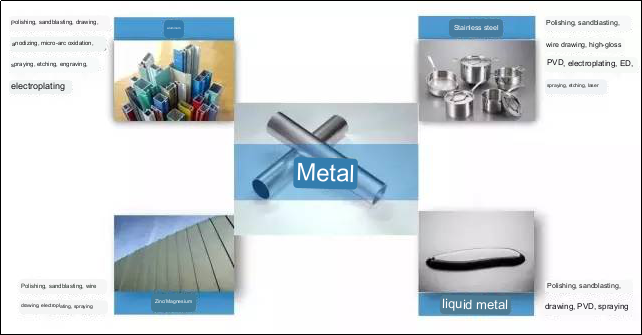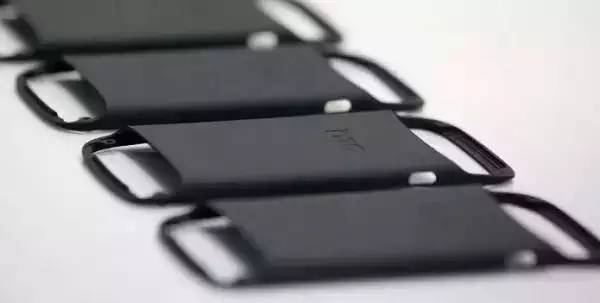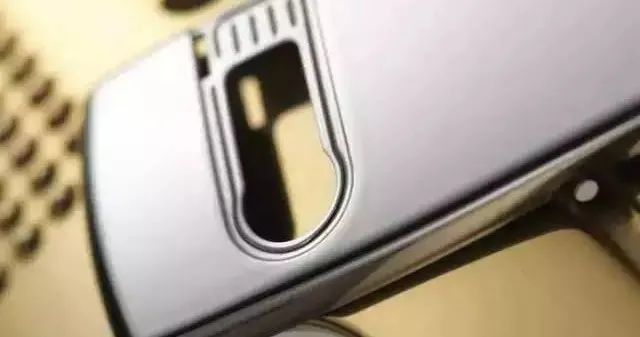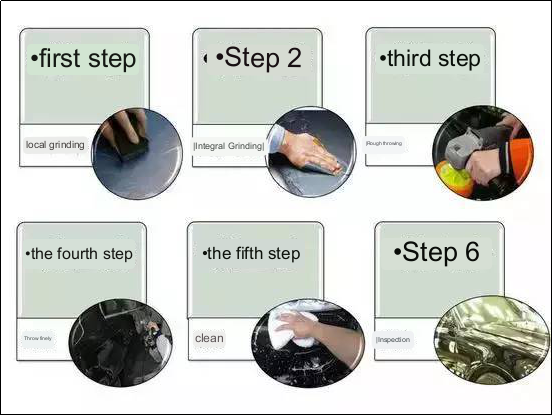- Home
- News
- From Ordinary to Extraordinary: Elevate Your Metalwork with Advanced Surface Treatment and Quenching
From Ordinary to Extraordinary: Elevate Your Metalwork with Advanced Surface Treatment and Quenching
The importance of metal surface treatment:
Increased corrosion resistance: Surface treatments on metals can protect them from corrosion, by creating a barrier that separates the metal from its environment. It increases the lifespan of metal structures and components. Enhance aesthetics – Metal surface treatments such as plating, coating, and polishing can improve the visual appeal of metal.
It is important to consider this for architectural or consumer products where aesthetics play a major role. Surface treatments like heat treatment, nitriding or hardening increase a metal’s hardness and wear-resistance, making it better suited for applications that involve friction, wear or harsh operating conditions.
Surface treatments such as sandblasting and etching can produce a textured finish that will improve the adhesion to paints, adhesives and coatings. This improves bonding, and reduces the likelihood of peeling or delamination. Improves bonds: Surface treatments for metals, like applying a primer or adhesion promoters, can help to promote strong bonds between metals and other materials such as composites or plastics. In industries like automotive and aerospace, hybrid structures are very common. Easy to clean: Surface treatments such as anti-fingerprint finishes or easy-to clean finishes can make metal surfaces cleaner and easier to maintain. This reduces the amount of effort and resources needed for maintenance.
Electroplating and anodizing are surface treatments that can increase a metal’s conductivity. This allows it to be more effective in applications requiring good conductivity such as electronic components. Improved brazing and welding adhesion can be achieved by certain surface treatments such as cleaning, removing oxide layers or other surface treatments. This results in stronger and more reliable metal structures or components.
Metal surface treatments are used in the medical and healthcare industries to increase the biocompatibility. It reduces the chance of an adverse reaction or rejection from the body when the metal surfaces come in contact. Customization and branding are possible: Metal finishes offer customization options, such as embossing, engraving or branding. These customizations are crucial for differentiation, personalization, or branding.
1. Anodizing
Using electrochemical principles, anodizing aluminum is a process that primarily produces an Al2O3 film (aluminum dioxide) on the surface. This oxide film is characterized by special properties, such as insulation, protection, decoration and wear resistance.
Process flow
Single color, gradient color: polishing/sandblasting/drawing – degreasing – anodizing – neutralizing – dyeing – sealing – drying
Two colors:
1 Polishing/sandblasting/drawing – degreasing – masking – anodizing 1 – anodizing 2 – sealing – drying
2 Polishing/sandblasting/drawing – oil removal – anodizing 1 – laser engraving – anodizing 2 – sealing – drying
Features:
1. Strengthening your muscles
2. Any color but white
3. Nickel-free seals are required by Europe, the United States, and other countries.
Technical difficulties and areas for improvement:
The cost of anodizing depends on the yield of the process. To improve the yield of anodizing, manufacturers must constantly explore the best dosage, temperature, and current density. We are always looking for a breakthrough. We recommend that you follow “Mechanical Engineer’s” official Twitter account as soon as possible to gain practical knowledge and information about the industry.
Recommended product: E+G curved handles, made from anodized materials, which are environmentally friendly and durable.
2. Electrophoresis
It can be used in aluminum alloys and stainless steel to make the products look different colors, maintain a metallic luster and improve surface properties.
Process flow: Pretreatment – Electrophoresis and Drying
Advantage:
1. Rich colors
2. No metal texture. Can be used for sandblasting and polishing. ;
3. Surface treatment can be achieved by processing in a liquid.
4. The technology has matured and is mass-produced.
Electrophoresis is required for die-casting components, which requires high processing requirements.
3. Micro-arc oxidation
This is the process of applying a high voltage to a weakly acidic electrolyte to create a ceramic surface layer. This process is a result of the synergistic effects of electrochemical oxidation and physical discharge.
Process flow: Pre-treatment – hot water washing – MAO – drying
Advantage:
1. Ceramic texture with a dull finish, without high-gloss, with a delicate touch and anti-fingerprint.
2. Al, Ti and other base materials such as Zn, Zr Mg, Nb etc. ;
3. Pre-treatment of the product is easy. It has good corrosion resistance and weather resistance.
The colors available are currently limited to black, gray and other neutral shades. Bright colors are difficult to achieve at the moment, as the technology is relatively mature. The cost is affected mainly by the high power consumption and is one of most expensive surface treatments.
4. PVD vacuum plating
Physical vapor deposition is the full name of an industrial manufacturing method that uses mainly physical processes to deposit thin film.
Process flow: Cleaning prior to PVD – Vacuuming in the furnace – Target washing and Ion cleaning – Coating – End of coating, cooling, and discharge – Post-processing, (polishing, AAFP) We recommend you follow “Mechanical Engineer’s” official account for the latest industry knowledge and information.
Features: PVD can be used to coat metal surfaces in a highly durable and hard cermet decorative coating.
5. Electroplating
This technology attaches a thin metal film on the surface of a metal in order to improve corrosion resistance, wear resistance, conductivity and reflectivity. It also enhances aesthetics.
Process flow: Pretreatment – Cyanide-free Alkali Copper – Cyanide-free Cupronickel Tin – Chromium plating
Advantage:
1. The coating is highly reflective and metallic in appearance.
2. SUS, Al Zn Mg etc. are the base materials. The cost of PVD is less than that of SUS.
Poor environmental protection and increased risk of pollution.
6. Powder spraying
Powder coatings are sprayed on the surface of a workpiece with electrostatic spraying machines. The powder is evenly adsorbent on the surface to form a coating. The flat cures to a final coat with different effects (different types powder coating effects).
Process flow: loading-electrostatic dust removal-spraying-low temperature leveling-baking
Advantage:
1. High gloss or matte finish;
2. Low-cost, ideal for furniture and radiator shells. ;
3. Environmentally friendly, high utilization rate and 100% utilization;
4. Can cover up defects well; 5. Can imitate wood grain effect.
It is currently used very rarely in electronic products.
7. Metal Wire Drawing
This is a surface-treatment method where grinding products are used to create lines on the workpiece’s surface to achieve a decorative look. It can be classified into four types based on the texture of the drawing: straight grain drawing (also known as random grain), corrugated grain and spiral grain.
Features: A brushing treatment can produce a metallic sheen that is not reflective. Brushing can also be used to remove subtle imperfections on metal surfaces.
Product recommendation: LAMP handle with Zwei L treatment. Excellent grinding technology used to highlight the taste.
8. Sandblasting
The process uses compressed air to create a high-speed beam of spray material that is sprayed onto the surface of a workpiece at high speeds. This changes the shape or appearance of the outer surface, as well as the degree of cleanliness. .
Features:
1. You can achieve different mattes or reflections.
2. It can remove the burrs from the surface and smoothen the surface, reducing the damage caused by burrs.
3. The workpiece will be more beautiful, as it will have a uniform color and a smoother surface. We recommend that you follow the official “Mechanical Engineer’s” account as soon as possible to gain practical knowledge and information about industry.
Product recommendation: E+G Classic Bridge Handle, Sandblasted Surface, High-End and Classy.
9. Polishing
Modification of the surface of a workpiece using flexible polishing tool and abrasive or other polishing medium. The selection of the right polishing wheel for different polishing processes, such as rough polishing or basic polishing, medium polishing or finishing process and fine polishing/glazing can improve polishing efficiency and achieve the best results.
Process flow:
Features: The workpiece can be made more accurate in terms of its dimensions or shape, or it can have a mirror-like surface. It is also possible to eliminate the gloss.
Product recommendation: E+G Long handle, polished surface. Simple and elegant
10. Etching
It is also called photochemical etching. This involves removing the protective layer from the area that will be etched, through the use of exposure plates and the development process, and then contacting a chemical solution to dissolve corrosion.
Process flow
Method of exposure: The project prepares material according to drawing – material preparation – material cleaning – drying – film or coating drying — exposure development drying — etching _ stripping — OK
Screen printing: cutting, cleaning the plate (stainless and other metals), screen printing, etching, stripping.
Advantage:
1. Fine processing metal surfaces is possible.
2. Give the metal surface a special effect
The majority of the liquids used in etching (acids, alkalis, etc.), are harmful to the environment. The etching chemicals are hazardous to the environment.
Importance of metal quenching:
-
Quenching can be used to quickly cool a metal in order to reach a desired level of hardness. The mechanical properties of a metal can be adjusted precisely by controlling the cooling rate. The metal can be made harder and more durable by quenching, which makes it ideal for applications requiring high strength and durability.
-
Strengthening: Quenching increases the metal’s strength by changing the microstructure. For example, martensite is formed in steels. This improves the metal’s load-bearing capability and mechanical performance.
-
Improving toughness. Quenching and tempering can improve toughness by reducing internal stresses. This is particularly important for applications in which the metal is exposed to sudden loads or impact.
-
Controlling grain size. Quenching has the ability to influence the size and structure of the grain in the metal. Rapid cooling can promote the formation of fine-grained structure, which can improve the mechanical properties of metals, such as increased strength and fatigue resistance.
-
Quenching is a way to control phase transformations. This can be used to achieve certain metallurgical phases such as suppressing unwanted precipitates or achieving microstructures that are desired for specific applications.
-
Quenching minimizes distortion and warping during heat treatment. The risk of dimensional distortion or changes in shape can be minimized by applying uniform cooling and control. This will ensure the integrity and accuracy of precision metal parts.
-
Surface finish preservation: Quenching helps to preserve the desired finish or appearance. The risk of surface discoloration, oxidation or scaling can be reduced by minimizing prolonged exposure to high temperatures.
-
Quenching increases the wear resistance by increasing the hardness and strength of the metal. The metal becomes more resistant to wear and tear, corrosion, and contact fatigue.
-
What is quenching?
Heat treatment called quenching involves heating the steel above critical temperature for a period of time and cooling it faster than critical cooling to produce an unbalanced structure with martensite dominating (bainite, or single-phase austinit can be produced as required). The most common process in the steel heat treatment is quenching.
Steel heat treatment is based on four main processes: normalizing, annealing and quenching.
Quenching is used to quench the thirst of animals.
The steel is then transformed from supercooled austenite to martensite, or bainite, to produce a martensite, or bainite, structure. This is combined with tempering, at various temperatures, to improve its rigidity, hardness and wear resistance. To meet the requirements of different mechanical parts and tools, strength and toughness are required. Quenching is also used to improve the physical and chemical properties, such as corrosion resistance and ferromagnetism, of special steels.
The process of heat treating metals in which the workpiece is heated up to a specific temperature, maintained for some time and then immersed into a quenching media for rapid cooling. Quenching media commonly used include mineral oil, water, brine and air. Quenching improves the hardness and resistance to wear of metal parts. It is therefore widely used for various tools, molds and measuring tools as well as cnc machining parts (such a gears, rolls and carburized parts) that need surface resistance. Combining quenching with tempering can improve the toughness, fatigue resistance, and strength of metals.
Quenching also allows steel to acquire certain chemical and physical properties. Quenching, for example, can improve the corrosion resistance and ferromagnetism in stainless steel. Quenching is mostly used on steel parts. If steel commonly used is heated to a temperature above the critical point, it will change into austenite. After the steel has been immersed in oil or water, it is rapidly cooled. The austenite then transforms into martensite. Martensite is the hardest structure in steel. Rapid cooling caused by quenching creates internal stress in the workpiece. Once it reaches a certain point, the workpiece may become deformed, cracked, or distorted. This requires the selection of a suitable cooling method. The quenching process can be classified into four different categories based on the cooling method: single liquid, dual medium, martensite graded, and bainite thermal quenching.
-
Quenching Method
Single medium quenching
The workpiece cools in a liquid, like water or oil. Simple operation, ease of mechanization and wide applications are the advantages. The disadvantage of quenching is the high stress and easy deformation and cracking that occurs when the workpiece is quenched in water. When quenching with oil, cooling is slow and the quenching size is small. Large workpieces can be difficult to quench.
Dual medium quenching
It is possible to quench complex shapes or uneven cross-sections by first cooling the workpiece to 300degC using a medium that has a high cooling capacity. Then, the workpiece can be cooled again in a medium of low cooling capacity. Double-liquid quenching has the disadvantage that it’s difficult to control. The quenching won’t be as hard if you change the liquid too soon, but if you change it too late, the metal will easily crack and be quenched. To overcome this weakness, the graded-quenching method has been developed.
Gradual quenching
The workpieces are quenched using a salt bath or an alkali bath at low temperatures. The temperature in the alkali or salt bath is close to the Ms point. After 2 to 5 min, the workpiece is removed and cooled by air. This cooling technique is known as graded quenching. Gradually cooling the workpiece is a way to uniformize the temperature both inside and outside. This can reduce the quenching stress, prevent cracking, and also make it more uniform.
-
Previously, the classification temperature was set slightly higher than Ms. The martensite zone is reached when the temperature of the workpiece and the surrounding air are uniform. The grade is improved at temperatures slightly below the Ms temperature. In practice, it has been found that grading at temperatures just below the Ms temperature produces a better result. It is common to grade high carbon steel moulds in an alkali solution at 160degC. This allows them to be deformed and hardened with minimal deformation.
-
Isothermal Quenching
The salt bath is used to quench the workpiece. The temperature of salt bath is slightly higher than Ms (in the lower bainite zone). The workpiece is kept isothermally until the bainite is complete and then it is removed for air cooling. For steels above medium carbon, isothermal quenching can be used to reduce bainite and improve the strength, hardness toughness, and wear resistance. Austempering is not used on low carbon steels.
Surface hardening
Surface quenching, also known as partial quenching, is a method of quenching that only quenches a surface layer on steel parts. The core part remains untouched. Surface quenching involves rapid heating to quickly bring the surface temperature of a rigid part up to quenching temperatures. The surface is then immediately cooled to prevent the heat from penetrating the core of the workpiece.
induction hardening
Induction heating is a method of heating that uses electromagnetic induction.
Han Cui
Use ice water as a cooling medium.
Partial quenching
Only the hardening parts of the workpiece are quenched.
Air cooling quenching
Refers specifically to the heating and quenching of neutral and inert gasses under negative pressures, normal pressures or high pressures in high-speed circulated gases.
Surface hardening
Quenching that is performed on only the surface of a workpiece. This includes induction quenching (contact resistance heating), flame quenching (laser quenching), electron beam quenching (laser quenching), etc.
Air cooling quenching
Quenching cooling is achieved by using compressed or forced-flowing air as a cooling medium.
Salt water quenching
Aqueous salt solution used as a cooling medium.
Organic solution quenching
The cooling medium is an aqueous polymer solution.
Spray quenching
Jet liquid flow cooling as a cooling medium.
Spray cooling
The mist spraying a mix of air and water is used to quench and cool the workpiece.
Hot bath cooling
The workpieces are quenched in a hot bath, which can be molten oil, metal, or alkali.
Double liquid quenching
After heating and austenitizing the workpiece, it is immersed first in a medium that has a strong cooling capacity. When the structure is ready to undergo martensitic change, it is immediately moved to a medium that has a weak cooling capacity.
Pressure quenching
The workpiece will be heated, austenitized, and then quenched under a special fixture. It is intended to reduce distortion during cooling and quenching.
By quenching
Quenching is the process of completely hardening the workpiece from its surface to its core.
Isothermal Quenching
The workpiece must be quickly cooled to the bainite temperature range and then held there isothermally.
Gradual quenching
After the workpiece has been heated and austenitized it is immersed for a suitable time in an alkali or salt bath at a temperature that is slightly higher or lower than M1. Once the workpiece has reached the medium temperature it is removed for air cooling in order to achieve martensite quenching.
Subtemperature quenching
The hypoeutectoid workpiece is autenitized between Ac1 and Ac3 temperatures, and then quenched to produce martensite or ferrite structures.
Direct quenching
The workpiece is quenched directly after it has been infiltrated by carbon.
Double quenching
After the workpiece has been carburized, it must be austenitized, then cooled at a higher temperature than Ac3, to refine its core structure. It is then quenched slightly above Ac3, to refine its carburized layer.
Self-cooling quenching
The heat from the heated part is transferred automatically to the unheated portion, which causes the austenitized surface to cool and quench rapidly.
Anebon adheres on the tenet “Honest, industrious, enterprising, innovative” to acquire new solutions continuously. Anebon regards prospects, success as its personal success. Let Anebon build prosperous future hand in hand for brass machined parts and Complex titanium cnc parts / stamping accessories. Anebon now has comprehensive goods supply as well as selling price is our advantage. Welcome to inquire about Anebon’s products.
Trending Products China CNC Machinging Part and Precision Part, really should any of these items be of interest to you, please let us know. Anebon will be pleased to give you a quotation upon receipt of one’s detailed specifications. Anebon have our personal specialist R&D enginners to meet any of the requriements. Anebon look forward to receiving your enquires soon and hope to have the chance to work together with you inside the future. Welcome to take a look at Anebon organization.



